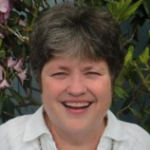Since 2019, volunteer catcher vessels and shoreside processors from the Bering Sea and Gulf of Alaska pelagic pollock fisheries have been participating in a National Fish & Wildlife Foundation (NFWF) grant research project. This project was designed to assess the efficacy of electronic monitoring for compliance with a full salmon prohibited species catch (PSC) retention requirement aboard pelagic trawl catcher vessels and to identify key decisions related to operationalizing EM under regulation for compliance monitoring.
Context: Salmon bycatch

Collectively, the Bering Sea and Gulf of Alaska (both Central and Western) pelagic pollock fisheries comprise over 100 C/Vs with an available harvest of 604,954 MT of pollock in 2022 (129,754 MT in the Gulf of Alaska and 475,200 MT in the Bering Sea). Although the Bering Sea (BS) and Gulf of Alaska (GOA) regulatory areas are managed differently and have different observer coverage requirements, federal regulations require that all salmon caught incidentally be retained. Strict Chinook salmon prohibited species catch limits are established by regulation in both areas.
In the BS, salmon catch is determined by counting individual salmon at the shoreside processing facility (known as a census count). Shoreside processing facilities in the Bering Sea all have a dedicated plant observer with the vessel observer assisting when pollock deliveries are made.
In the GOA, salmon catch is also accounted for at the shoreside plant with observer salmon census numbers extrapolated to the unobserved portion of the fleet. At shoreside facilities in the Gulf, there are no dedicated plant observers; the vessel observer moves into the processing facility when a pollock offload begins in order to census salmon.
In addition to salmon retention requirements, “improved retention-improved utilization” (IRIU) regulations require that all pollock be retained when the pollock fishery is open to directed fishing, and up to the maximum retainable allowance (MRA) be retained when the directed pollock fishery is closed, except in the GOA when the pollock trip limit of 300,000 pounds is exceeded (all pollock in excess of this limit must be discarded). These retention and discard requirements are currently monitored and recorded by human observers.
The project and its growth
Since 2018, when the North Pacific Fishery Management Council (Council) prioritized the development of EM as a monitoring tool for trawl vessels, participants in the Bering Sea and Gulf of Alaska pelagic trawl catcher vessel pollock fisheries have been evaluating the use of electronic monitoring (EM) for compliance monitoring. In close coordination and collaboration with industry, the National Marine Fisheries Service (NMFS), the North Pacific Groundfish Observer Program, the Council, EM service providers, and third-party video reviewers, volunteer vessels have explored EM as an alternative to the regulatory requirement for human observers.
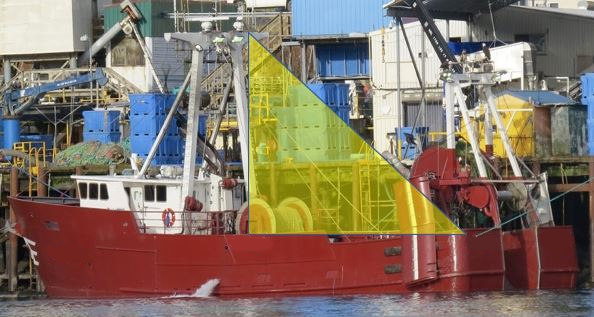
Volunteer trawl catcher vessels that deliver to shoreside processors were chosen from both the BS and GOA fishing areas with some specific vessels that have deck and catch handling configurations that fall outside traditional catcher vessel operations. Each volunteer vessel in the project requires an installed EM system and accompanying Vessel Monitoring Plan (VMP). The vessel-specific VMP outlines all project requirements and vessel operator responsibilities, documents the location and purpose of installed EM camera system components, and describes the specific catch handling and discard locations that the vessel can use.
Four objectives, developed by the North Pacific Fishery Management Council’s Trawl EM Committee, helped to guide the project towards a regulated EM program for pollock vessels in the North Pacific.
- Objective 1: Improve salmon accounting – to provide stable salmon accounting against the PSC hard cap for Western Gulf and Central Gulf pollock vessels as well as the PSC performance standard for BS pollock vessels.
- Objective 2: Reduce monitoring costs – to develop cost efficiencies and free up money for other priorities (e.g., EM coverage in the GOA pollock fishery could allow for an increase in observer coverage/days for other fisheries in partial coverage category).
- Objective 3: Improve overall monitoring data for catch accounting and compliance – to explore innovative methods to account for PSC species and bycatch species that have the potential to limit compliance monitoring in the pollock fisheries, which requires high retention of catch; to explore innovative methods to account for protected species; and to achieve more comprehensive coverage.
- Objective 4: Examine current regulatory retention and discard requirements as necessary to achieve Objectives 1-3.
Under the first pilot year (2019) of this project, volunteer vessels continued to carry human observers and conduct fishing operations as they traditionally would, while simultaneously employing EM systems. Cameras on all vessels were strategically placed at key locations to ensure that all catch can be seen from the time the catch reaches the vessel until it is either put into the vessel’s hold or returned to the water. Hydraulic pressure sensors are used to turn the camera video recording on and off in conjunction with fishing activity. Rotation sensors are also used in conjunction with the pressure sensors to indicate to the EM video reviewer when catch is likely being brought on board and dumped in the hold. The EM System also includes a Global Positioning System (GPS) that records a vessel’s location and speed to provide further information about a vessel’s activity.
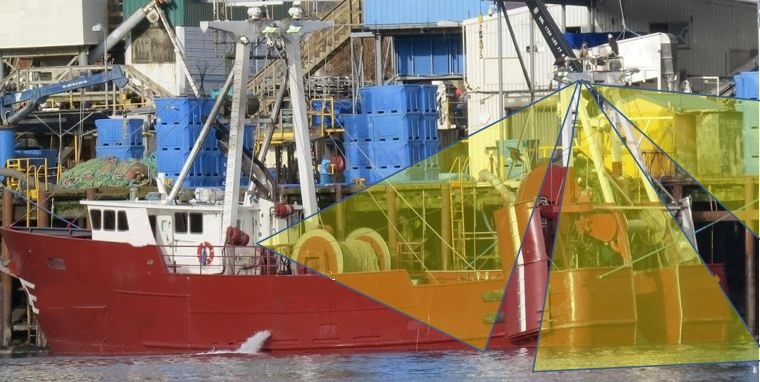
2020 marked the first year of the project’s operation under an Exempted Fishing Permit (EFP), which has been a crucial piece of this project’s success. The project in 2020 included 29 vessels and 7 processors, was expanded significantly in 2021 to 53 vessels and 9 processors with the final expansion occurring in 2022 with a total of 60 vessels and 10 processors. (this participating number of vessels is the same for 2023). Obtaining the EFP from NMFS allowed the project to effectively evaluate the efficacy of EM as an alternative to human observers for at-sea monitoring by allowing exemptions from specific regulations related to at-sea observer coverage and discard/retention requirements. The EFP also detailed additional requirements that were necessary for the project by clearly outlining responsibilities of all parties and provided a framework for stakeholders to operate under.
Performance Standards
In order to meet the maximum retention requirement of the EFP, which is an essential piece of the program’s design to allow for full species accounting at shoreside processors, catcher vessels needed to be exempted from the MRA regulations in both the BS and GOA, and GOA vessels needed to additionally be exempted from the 300,000 pound pollock trip limit. MRAs are the percentage of bycatch species a vessel is allowed to retain when compared to their target (pollock) species. Under current regulations everything in excess of the MRA percentage is required to be discarded and a vessel cannot be paid for any overage amount that is delivered to a processor. These MRA amounts and the fines that are imposed for violating the MRA are structured to ensure vessels focus on their target species. The GOA pollock trip limit vessels requires vessels to deliver no more than 300,000 of pollock for each delivery to slow the pace of the fishery. If the vessel exceeds the limit the vessel is not paid for the overage and fines are imposed depending on the number of occurrences that vessel has in a calendar year.
Under the EM project, since vessels are required to retain and deliver all incidental species catch in addition to their pollock, performance standard metrics were developed to ensure that EM vessel behavior remained unchanged (when compared to non-EM vessels) when exempted from MRA requirements. At the end of the two pollock fishing seasons, landing data was assessed according to the MRA tables for each area and vessels were required to forfeit proceeds from any overages valued in excess of $250, which was then donated to the North Pacific Fisheries Research Foundation (NPFRF). Additional monetary penalties were also put in place for more than four overages, similar to how the MRA regulations are structured.
In addition to the MRA performance standard, another metric was also developed to prevent EM vessel behavior changes in the GOA regarding the 300,000 pound pollock trip limit. Rather than requiring vessels to stay under 300,000 pounds on a trip-by-trip basis, which is nearly impossible due to the no discard requirement, a four trip average was established by which EM vessels had to stay under 300,000 pounds on average. Egregious overages greater than 345,000 pounds were excluded from four trip overages and instead counted as an automatic offense. Vessels were again required to forfeit any proceeds from the overages with additional monetary penalties put into place starting on the third offense and all proceeds from overages were donated to NPFRF.
Shoreside Observers
Another key piece of the EFP was the exemption from carrying vessel observers, which shifted observer sampling duties traditionally performed at-sea to occur at shoreside processing plants at the time of offload. As previously mentioned, processors in the BS, or GOA processors receiving BS pollock, were already required by regulation to have plant observers prior to the EFP. Under the EFP, beginning in 2020, an additional 1-2 plant observers were placed at each of the plants receiving EM deliveries, depending on the volume of deliveries the plant received. While there were some increase sampling requirements and challenges to work through given the increase in plant observer workload for EM deliveries, overall, it was a fairly smooth transition to shoreside sampling at these plants.
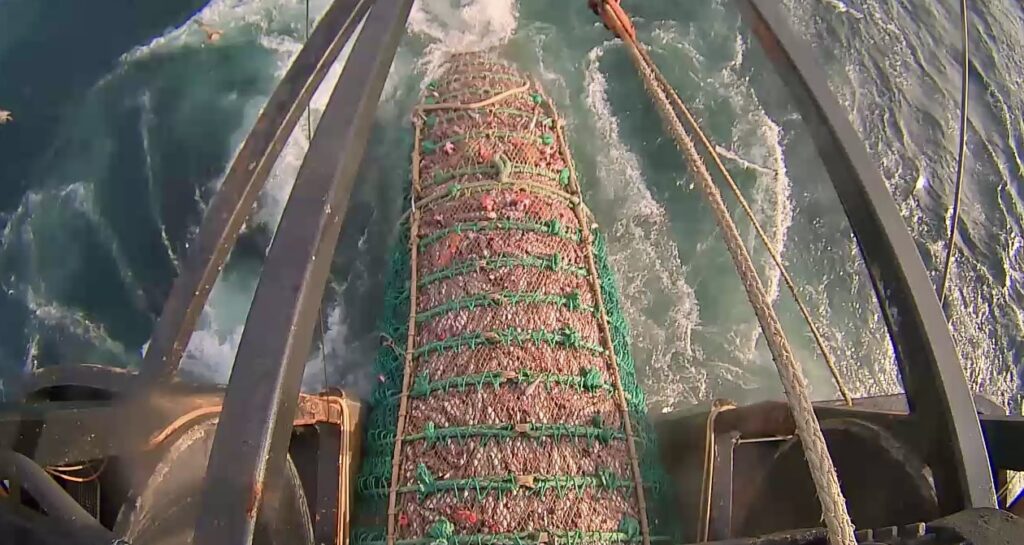
In the GOA, however, there were additional challenges to overcome due to the different regulatory and fishery management structure in this area. While the BS pollock fishery operates under a rationalized program with allocated quota and fishing seasons that operate consistently for several months of the year, the GOA operates in a race-for-fish manner where a high volume of fishing takes place in a couple short weeks per season. Additionally, prior to the EFP in 2020, Gulf processors had not had observers assigned to their facilities in nearly a decade. As a result it was difficult to adequately predict necessary observer staffing and workloads at the plants taking EM deliveries. There were also communication issues to overcome, especially since the GOA race for fish trawl fisheries are part of the partial coverage observer program, meaning that not all trips were sampled by shoreside observers. Although all participating EM vessels in the project, regardless of area, had their EM cameras on for 100% of their EM trips, in order to maintain the partial monitoring sampling frame structure in the GOA, 30% of EM deliveries were monitored by the shoreside observers. Strong communication from the vessels and processors to the observers was required so the observers understood which vessels delivering were EM versus non-EM, the EM vessels offload schedules so the appropriate vessel could be sampled to meet the random 33% sampling frame objective.
A major challenge encountered throughout 2020 and 2021 came from the unpredictable impacts arising from the COVID-19 pandemic. Processing plants closed their campuses keeping their employees on site, observers were not allowed to mix across processing plants, between vessels or between plants and vessels, and vessels crews were not allowed on a processor’s docks or within a processing plant. These measures plus sanitation, repeated testing, and strict quarantines were implemented to minimize COVID infections. Despite these significant challenges, EM, via the EFP, continued to operate and provide monitoring coverage. In fact, the pandemic was a catalyst for the doubling of participants in 2021 since EM systems replaced human observers helping to minimizing COVID infection risk and thereby highlighting a significant benefit of EM systems when compared to human observers.
Evaluating program objectives
Objective 1 for improved salmon accounting was achieved, especially in the GOA. EM systems help support salmon accounting requirements and improve accountability of PSC. While there is no change to the process in which salmon PSC data are collected and enumerated in the BS under this project, EM systems provide more verification that all salmon are retained and available to be counted.
Under current requirements, the GOA pollock fishery includes two elements that results in less precise salmon accounting. First, the smaller vessels in the WGOA regulatory area deliver to tenders with Chinook salmon PSC accounting based on at-sea composition samples, not census counts at the plant. Shoreside accounting of salmon PSC from vessels delivering to a tender vessel was not possible because there was no way to confirm salmon were retained until offload to a shoreside processing facility. Second, only vessels selected to have an at-sea observer, and delivering directly to a shoreside processing facility, had accountability that all salmon were retained and data from these vessels are used to estimate PSC. The realized observer coverage for the partial coverage sector results in an observed rate of 20-28% for GOA pollock vessels. The PSC rates from these observed vessels is extrapolated out to the unobserved vessels. At-sea sampling and extrapolated data can result in imprecise and highly variable Chinook salmon estimates that are not reflective of actual take. EM systems fix both these weaknesses. For the tender component of the fishery, not only do the catcher vessels use EM but also the tenders that these vessels deliver to. This assures that no salmon are discarded and allows for census counts at the processing plants. And while only 20 – 28% of the deliveries are sampled, the EM cameras are on for 100% of the trips assuring that no salmon are discarded, resulting in representative random sampling for salmon accounting at the processing plant.
Regarding Objective 2 on reduced monitoring costs, identification and estimation of the operational and economic costs for vessels and shoreside processing plants associated with using EM (versus carrying human observers) for both the full coverage and partial coverage categories of pollock vessels was necessary. This includes costs associated with project coordination, data analysis services, EM equipment services, field technical services as well as those costs associated with video review and data storage.
The trawl catcher vessels that participate in the BS pollock shoreside fishery have been required to pay for 100% observer coverage since 2009. The daily at-sea observer rate for the full coverage fleet was estimated to range from $378/day to $417/day. Based on the estimate of 5,070 observer days that would have been deployed on EM trips in 2021, the lower cost per day estimate results in about $1.92 million less in at-sea observer costs and the higher cost per day yields about $2.11 million less in at-sea observer costs.
For BS plants receiving deliveries of pollock, the daily rates for full coverage were again estimated to range from $380/day to $430/day. The estimated number of plant observer days in 2021 was 1,599. Based on the number of observer days at these plants, the estimated cost ranged from $608k to $688k.
Pollock catcher vessels and their processing partners in the partial coverage sector for the GOA pay 1.65% of their ex-vessel revenue for their monitoring costs. The average annual cost per sea day in the partial coverage fisheries have ranged between $895 and $1,393 since 2014. For analytical purposes, a low ($1,309/day) and high ($1,393/day) cost of at-sea observer coverage was estimated. Based on the estimate of 310 observer days that would have been deployed on EM trips in 2021 and sampling rates of 20 percent to 30 percent of trips, a low ($273k) and high ($435k) estimate of at-sea observer costs was estimated. For processing plants, using the 548 GOA plant EM observer days reported for 2021 and a range of daily costs of ($500/day to $1,050/day), the estimated annual costs range from $274k to $575k.
| Estimated costs of Status Quo Vessel Observers (for effort associated with 2021 trawl EM EFP) | |||
| Description | Area | Low Estimate | High Estimate |
| Partial coverage at-sea Observer Cost | GOA | $357,000 | $570,000 |
| Full coverage at-sea observer cost | BS | $1,916,000 | $2,914,000 |
| Full coverage shoreside monitoring cost | BS | $304,000 | $344,000 |
| Total | BS and GOA | $2,577,000 | $3,828,000 |
| Estimated costs of Trawl EM (for 2021 EFP level of effort, scope, scale) | |||
| Description | Area | Low Estimate | High Estimate |
| Ongoing EM costs (does not include one-time equipment costs) | BS and GOA | $392,000 | $392,000 |
| Partial coverage shoreside monitoring cost | GOA | $274,000 | $575,000 |
| Full coverage shoreside monitoring cost | BS | $608,000 | $688,000 |
| Total | BS and GOA | $1,274,000 | $1,655,000 |
Overall, the costs of monitoring BS and GOA pollock fisheries is significantly reduced with EM (when compared to human observers). Not including one-time costs of purchasing and installing EM equipment for the first time on vessels, the costs to the industry under the EM program are reduced for full coverage participants fishing in the BS with at-sea observer costs being greatly reduced (over $1 million per year) and shoreplant observer costs increasing by more than $300,000. In the partial coverage GOA fishery, estimated cost savings are less certain and will depend on the partial coverage observer contracts and the number of vessels that opt-in to the EM program.
For Objective 3, improving overall monitoring data for catch accounting and compliance, one issue to first be addressed was determining whether EM systems would function reliably on the diverse types of pollock vessels functioning in the GOA and BS. This included determining the appropriate method for recording compliance information, including the amount of time cameras should be turned on. Throughout the course of this project, no issues were encountered regarding the reliability of the EM systems used onboard any of the participating vessels.
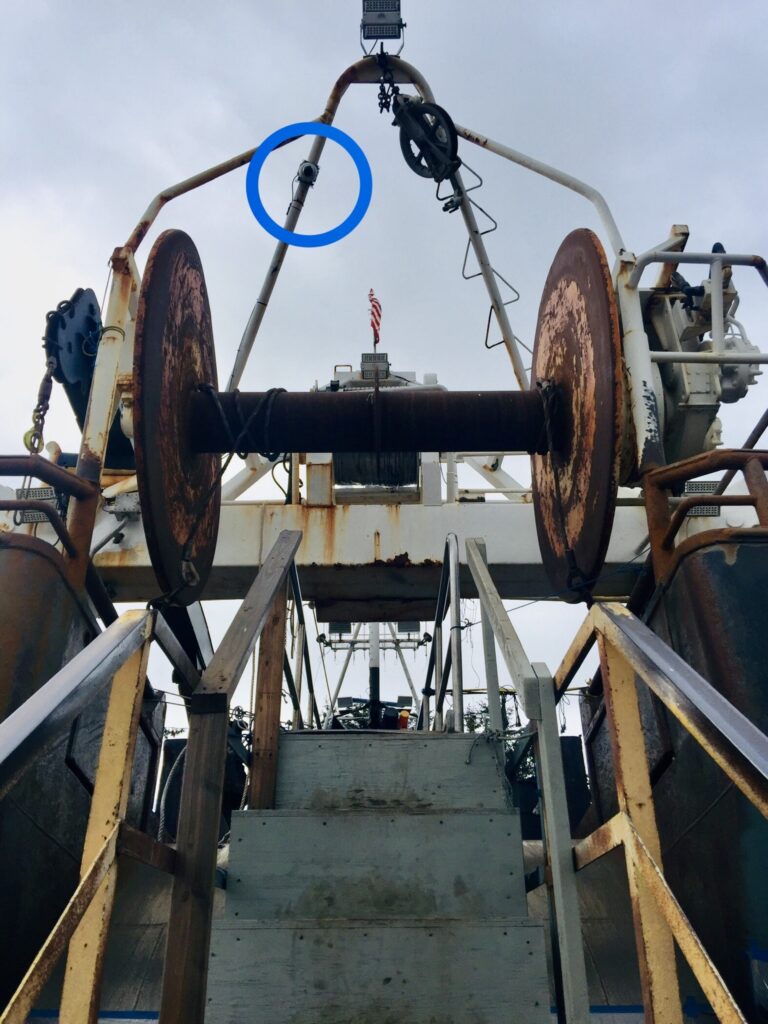
A second issue to be addressed was determining what type(s) of spatial information is needed and may be lost to the existing Observer Program. With EM for compliance only, it was necessary to determine what will replace the information collected at sea for spatial biological information. Regarding the catch of pollock, impact is minimal to the difference in spatial and temporal data collection. The effect is a loss of some spatial and temporal resolution of the data used for stock assessment because information on species composition, length, and age composition can only be collected at the resolution of the delivery, which is a change from haul-level resolution to trip-level resolution. Trip-level resolution contains catches from two or more hauls done in different places and times. But these data impacts are mitigated by using delivery and logbook data to back-calculate to haul data.
A third issue addressed was identifying how observer duties at shoreside facilities will be executed for both the full and partial coverage categories of pollock vessels to ensure data stream timeliness and integrity. Under the EM program, shoreside data collections replace at-sea sampling and data collections that would have occurred on CVs had an observer been deployed. These shoreside collections mirror standard at-sea observer data collections and include additional data collections based on management and scientific needs. The additional collection of composition and biological data at the shoreside processing plants are necessary to fill the data gap that would emerge without observers collecting these types of data at sea on the CVs. This results in an increased workload for the shoreside observer and necessitates one or more additional observers per shift to collect the composition and biological data as outlined by the Observer Program (while continuing to monitor the sorting lines for salmon).
Data obtained under the EM do not directly feed into catch accounting or stock assessments. The data collected is used to verify reported data. As such, timely video review is needed to verify at-sea discard events. Lack of timely data could affect management if at-sea discard events are not accurately recorded by vessel operators. To help ensure timely video review and support vessels in accurately recording all necessary data in their logbooks, EM reviewers use a vessel feedback report to communicate with the vessel operators on their performance. The primary use of these reports is for education and outreach. The vessel feedback report is emailed to the vessel operators after the review of a hard drive such that vessels can modify or improve their recorded information, if needed, in a timely manner.
Under this program, it is important to highlight that there has been increased accuracy of large shark estimates from pollock catcher vessels. Data recorded in the vessel logbooks provides new length and weight information for large sleeper and salmon sharks, which is now available for use in this stock assessment for both the BS and GOA.
Under this program, it is also important to highlight that there is also an increase in accountability for all PSC species beyond salmon. EM systems are used to verify compliance with retention requirements allowing for PSC data to be collected during offload. Previously, data for other PSC species, including halibut, crab species, and herring, were collected from at-sea observers. Full enumeration and data collection at the plants results in less estimation variance since PSC estimates no longer depend on sample size limitations of the observer data collection.
Objective 4 was achieved via the Council’s analytical package and adoption of final EM program regulations. Both MRA and pollock trip limits are discard requirements that conflict with the maximized retention requirements for the trawl EM monitoring program. The performance metrics developed by project participants, in consultation with NMFS, provided disincentives for vessels to change fishing behavior and were viewed as an effective tool by both NMFS and the Council. However, implementing similar performance metrics through regulations was not possible due to limitations on Magnuson Stevens Act (MSA) authority to collect the value of fish in excess of a limit. A creative solution that will be part of the regulated program is exempting participants from both MRAs and trip limits regulations but, in addition, require participating vessels to join an incentive plan run by an industry group that is approved by NMFS. The incentive plan would function similar to the performance metrics system in the EFP.
Another creative tool that will be implemented under regulation is focused on GOA vessels and the nature of the groundfish fisheries in this area. GOA trawl CVs sometimes use more than one gear type or target multiple species in a trip, but the EM program will only authorize the use of EM for pelagic trawl trips targeting pollock. As such, these vessels will have the option prior to the start of each season of requesting to be part of the Trawl EM Program. Once accepted as part of the program, trips using only pelagic pollock trawl gear will automatically be EM trips whereas multi-gear trips will automatically be considered for an observer under the partial coverage observer program.
Final steps and implementation of a regulated program
After having initiated a full analytical package earlier this year, in October 2022 the Council took final action to adopt EM as an alternative for compliance with optimized retention and full salmon PSC retention requirement aboard pelagic pollock trawl catcher vessels in both the BS and GOA. Implementation of this program is scheduled for January 2025. Implementing a program of this scale for the largest food fishery in the U.S. would not have been possible without the collaboration and dedication of all our project partners over the last several years. This includes all participating vessels, processing plants, the National Marine Fisheries Service, the North Pacific Groundfish Observer Program, the Council and its staff, EM service providers, and third-party video reviewers. Although there were many challenges, a unique aspect of the project that was instituted early on and that was critical to its success, were weekly/biweekly EM EFP Trawl teleconferences with the PIs, NMFS, and representatives from all stakeholders. This allowed nearly real-time communication about issues and collaboration to occur which led to solutions being put into place relatively quickly. Rapid improvements on many issues were able to be made rather than needing to wait until the following season. An additional important aspect of this project was the continuing education and outreach to the participating vessels and processors not only by the PIs, but also by each of the other project partners. The extensive education and outreach allowed for continued improvement of program elements and fostered a culture of accountability amongst all program participants. Together, all challenges and obstacles were able to be addressed in an open and transparent way, which allowed for the adoption of an EM program that will meet the needs of both industry and management.
* * *
Our sincere thanks to Ruth Christiansen of United Catcher Boats, and to Julie Bonney and Chelsae Radell of the Alaska Groundfish Data Bank. They welcome your questions and comments about their work. Projects in the Field is a series of independently produced articles profiling work supported by NFWF’s Electronic Monitoring & Reporting Grant Program, and is meant to raise awareness and support for these important initiatives. To submit an article for this series, please contact us at info@em4.fish.


